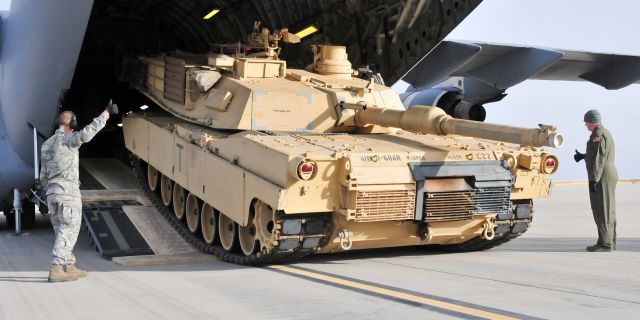Created in the 1970s, the Abrams tank has been the mainstay of the American armored forces for 35 years. Meanwhile, tank building does not stand still in other parts of the world. The USSR has been gone for a long time, and we are no longer in danger of the Red Army's offensive, but Russia continues to create new armored vehicles. The newest of the tanks is the powerful T-90 tank. Who would have emerged victorious if these tanks had met in battle?
Created in the 1970s, the Abrams main battle tank has been the mainstay of the American armored forces for 35 years. During this time, it has been repeatedly upgraded. He received a new 120-millimeter cannon instead of the old 105-millimeter, and his armor is constantly being improved. Inside, the tank has also changed beyond recognition - the latest modification of the M1A2 SEP v.2 are fully equipped with digital and network equipment. The US Army also plans to create a new version of the Abrams - M1A3, seriously improving the well-deserved tank and reducing its greatly increased weight as a result of constant upgrades.
Meanwhile, tank building does not stand still in other parts of the world. The Soviet Union has been gone for a long time, and we are no longer in danger of the Red Army advancing through the Fulda Corridor, but Russia continues to create new armored vehicles. The newest of the tanks in service is the powerful T-90 main battle tank. It is worth noting that most Western powers no longer consider main battle tanks to be a priority.
The T-90 is a modification of the T-72. The Russian government decided to follow this path after the more sophisticated T-80 performed poorly during the Chechen Wars. We are talking, in fact, about the T-72, equipped with more advanced systems from the T-80U, but without its unsuccessful gas turbine engine. Instead, the most common version of the T-90 uses a 1,000-horsepower diesel engine, making its specific power far from ideal. The tank is equipped with multilayer armor, dynamic protection and an optoelectronic suppression system. He still had a 125-millimeter cannon. Overall, it's a formidable machine, much more efficient than its predecessors.
The M1A2 is superior to the T-90 in terms of performance, but also in terms of price, and much more. The American doctrine, the result of many years of analytical work, considers the main thing for a tank to be the first to detect the enemy and be the first to hit him. Abrams tanks are designed for this.
Advantages in the M1 duel are provided by modern sensor systems and fire control system, constantly improving uranium armor and powerful armor-piercing projectiles M829. A new, much improved version of their M829E4 went into production last July. This modification of the projectiles, which is believed to have easily crushed the Iraqi armored forces during the First Gulf War, greatly increases the effectiveness of the 120-millimeter M256 cannon.
M1A2 SEP v.2 is constantly being improved. According to the budget statements of the Ground Forces, the designers focus on network technologies, mobility and protection.
Full-scale work on the M1A3 is expected to begin in the coming years. All the characteristics of the tank are likely to be improved. The new modification should become noticeably lighter and more mobile. At the same time, its protection will also be improved, and computer systems and sensors will be much improved.
It should be noted that the development of the M1A3 - and, moreover, its commissioning - is not currently among the priorities for the Ground Forces. After the withdrawal of American ground forces from Iraq and Afghanistan, the positions of the Ground Forces weakened. Now they are looking for a new niche within the framework of a new doctrine focusing on the Pacific direction. Even with Russia's actions in Ukraine, no one seriously expects the United States to engage in a major new non-nuclear land war in the foreseeable future. Thus, the most likely scenario in which American forces may encounter something like the T-90 is another hybrid war, in which there may be more economical ways to deal with individual groups of enemy armored vehicles.
Dave Majumdar is the editor of the military department of The National Interest.

